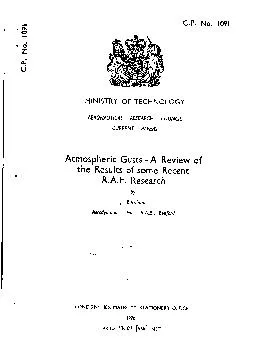PDF-MINISTRY OF TECHNOLOGY
Author : stefany-barnette | Published Date : 2016-04-21
CP No 1091 AERONAUTICAL RESEARCH COUNClL CURRENT PAPERS Atmospheric Gusts A Review of the Results of some Recent RA E Research bY Burnhom Aerodynamrcs Dept RAE
Presentation Embed Code
Download Presentation
Download Presentation The PPT/PDF document "MINISTRY OF TECHNOLOGY" is the property of its rightful owner. Permission is granted to download and print the materials on this website for personal, non-commercial use only, and to display it on your personal computer provided you do not modify the materials and that you retain all copyright notices contained in the materials. By downloading content from our website, you accept the terms of this agreement.
MINISTRY OF TECHNOLOGY: Transcript
Download Rules Of Document
"MINISTRY OF TECHNOLOGY"The content belongs to its owner. You may download and print it for personal use, without modification, and keep all copyright notices. By downloading, you agree to these terms.
Related Documents














